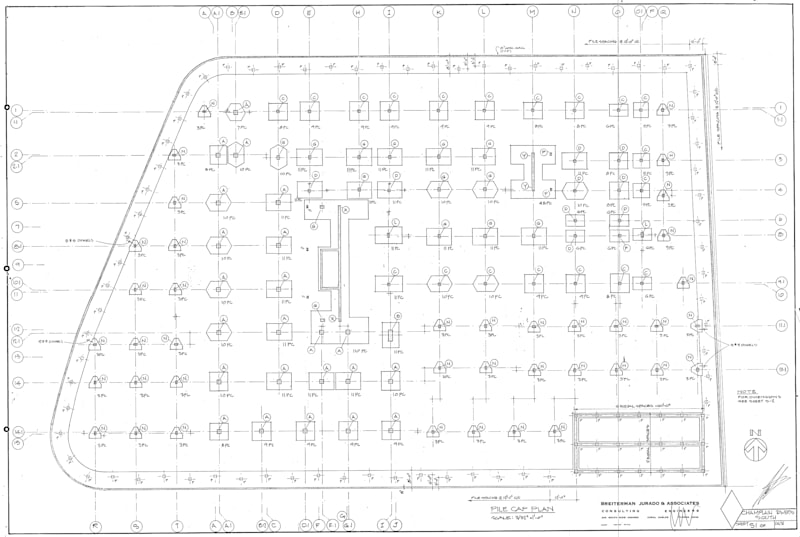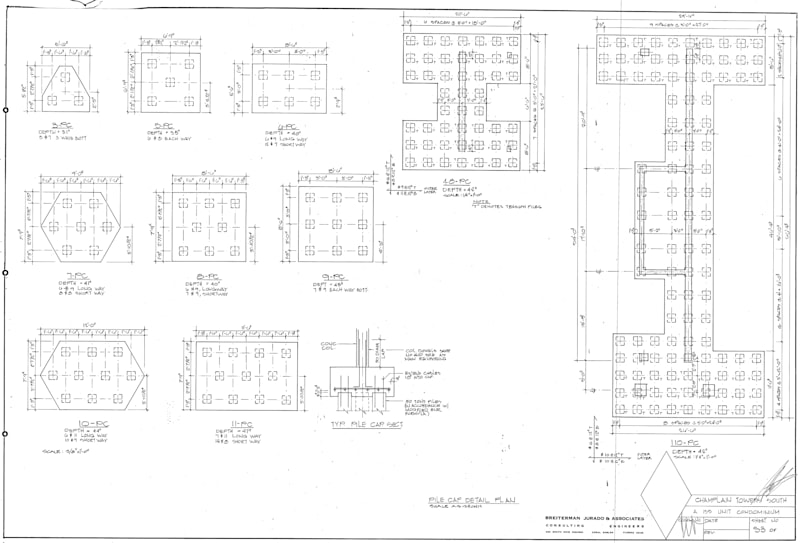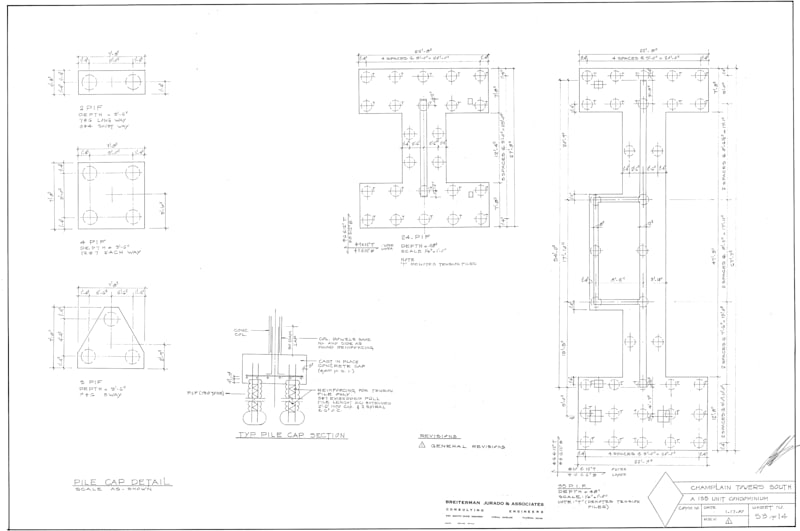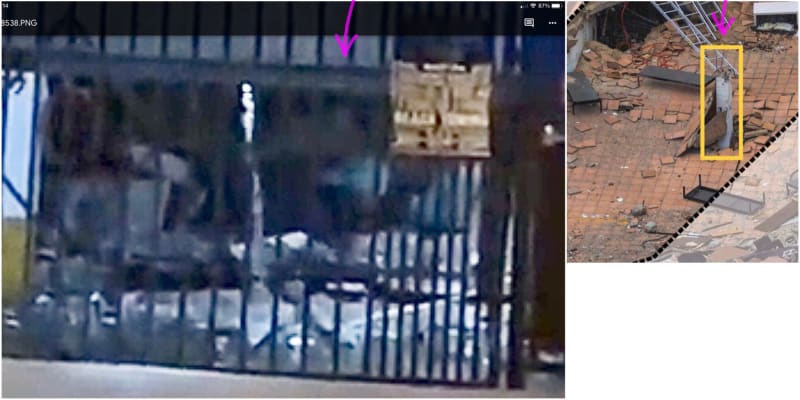OK a few more thoughts around the Ring video. I am not at all knowledgeable around structural engineering so cant fully decipher these, but there are a few things that seem very clear to me from intense assessment of this video.
1) I am not at all convinced that the first image in the video is a "bug". This looks more to me like a temporary loss of video feed. The audio continues during this "freeze frame". Ring uses SIP internet protocol to transmit its audio and video, and video is (of course) larger bandwidth in nature. whilst I can't determine it for definite, I would be reasonably convinced that the Ring camera transmits its audio and video feeds separately, and something led to the loss of video during these few seconds - could be coincidental, or could be relating to the failure. There certainly appears to be a "flash" of light at the top left of the image immediately after freeze, which could be something electrical, causing interference in transmission (its a reasonably safe assumption that this camera is wireless not wired, and wireless is highly susceptible to local EM events). My view therefore is that we are not seeing the tail end of something that we dont see the start of - but rather that the first image is chronologically accurate and an event in those first two seconds led to the slanted image we see later.
As an aside on this part - sample size of one admittedly, but I also have a Ring camera and try as I might I cannot replicate this "freeze frame" element in normal usage.
2) At the end of the video, it absolutely appears that the table that the camera is on starts sliding to the right hand side. I am actually not sure this is the case - or at least its not a "free slide" of the table purely due to gravity. Throughout the video, you see a "pillar" of white at the left extreme. I am pretty sure that this is either the inside of the balcony door frame, or it is a jutting out bit of wall (these were in the condos in the corners of this room if you look at some of the sales pictures for these condos). Note that during this "slide" of the table, this part of either wall or door frame never changes its reference point to the camera.
This implies strongly to me that rather than "sliding", this table was being "pushed" by this wall. If this is the case, the other conclusion is that this wall was moving in relative isolation. It would appear this was moving in isolation from other walls (albeit this is clearly hard to work out) but categorically it was moving in isolation to the floor of the condo - there are plenty of reference items that confirm this.
Note that we do not really know that this camera was in fact on a table, its merely on a platform of some kind. Could this be a wall mounted shelf?
3) If the above implications are correct (admittedly could be off) then this has a very interesting further conclusion - that immediately prior to the point of collapse, the outside shell of the condo (i.e. the external door frame and presumably balcony) was moving relative to the rest of the condo. This period is long enough to know that this was not DURING collapse, but just pre collapse. What does this mean? I have no idea, but it doesnt really align to the failure of a column underneath the "body" of the condo I dont think.
4) A quick note on the timings in the video also. I know there have been a couple of comments that at least part of this video could have been during freefall. I categorically dont believe this is the case, for a couple of reasons. First of all any significant downward motion in the condo could not have occurred without inertia moving at least some of the contents/jolting them - all of them. The only item we really see move in this way other than wall forces impacting on them is the empty TV box which judders rather than "lifts". Secondly, we need to consider WHY the camera stopped recording. This could only happen for three reasons (two of which are largely the same). Firstly, the camera lost power. Secondly, the camera lost connectivity. Both of these therefore we can consider to be loss of utilities/services. Thirdly, the camera was destroyed. I don't believe that it can be the third reason - no matter the speed of collapse and destruction, I don't believe that we wouldnt see a single frame of destruction occurring prior to the camera going completely offline. The failure was sudden and immediate. As such, I am pretty sure that this camera stopped recording due to a loss of power or connection - which was almost certainly triggered by the commencement of vertical movement of the condo. There are other reasons as well - right up until the end of the video, the debris from above continues to fall - if the condo was in (or starting to) free fall, you would see a relative slow down of these particle falls - you do not.
5) A note on the "slanting" of the condo, be this in the horizontal plane of the video or the depth plane. On further assessment, I don't believe that theres clear evidence of this (although to be clear not saying this wasn't occurring). A lot has been made of the change in fall of the particles, which initially had me confused as well. However when you look at individual particles very carefully, there is a clear tendency towards the vertical plane, rather than a straight line fall. This is the case on both sides of the camera, and also when particles are dead centre, you dont see this gravity influence effect as if there was a horizontal slant.
I am less sure on a vertical slant. I think you would see more evidence of this in the video - other items moving etc. The particles themselves show no change in luminosity in flight compared to the vertical falls, which you would see if the backwards vertical slant was bringing these particles closer to the camera whilst in flight.
6) I think more likely, given 5, that the SOURCE of the particles was moving in ceiling above the camera. The unusual trajectory I cant fully explain, but this could be due to ejection under stress (for example, concrete failing on a side of a rebar rather than directly below it?).
Equally in line with this, I do think pretty categorically that the particles are concrete not dry wall. We are seeing these being generated for (minimally) 10 seconds, in ROUGHLY the same location. I simply dont think drywall is robust enough to do this. Equally, the location of this camera directly below concrete beams to support the door frame etc would back this up, as well as the lack of any obvious visible cracks in the rest of the ceiling drywall.
7) The deformed pillar beside the door, for what its worth, I have calculated to have "relatively" moved the base of this pillar to the left by around two widths of the pillar.
What does this all mean? I really dont know, but I'm hoping someone else may.
Having read 6 threads on this and been thoroughly convinced of the obvious if "not sensational" pool deck collapse due to water load leading to pulling/other forces causing column collapse, my untrained eye (especially the movement of the camera at the end apparently caused by a wall) does start to lead me to question this is the full story. Did something fall off the roof with force and strike the balcony of 711 or the balcony above, leading to ultimate failure of the outer balcony and wall on this area? It would tie more closely with what is seen in the Ring video. Unsure if this could cause a "pivot" effect - i.e. balcony struck, causing a shift of the slab inside the condo up to balance this downward force and hence deforming the pillar. Of course even if this is the case, this is not necessarily full cause and effect, and this could merely be a symptom in some way of a lower collapse. But I think the duration is significant enough that this may not be the case.
Worth mentioning as well that in the last 1.5-2 seconds (after the box jolt) the camera does not just move right relative to contents of the room, but also DOWN. This is not as obvious, but when you look at it frame by frame theres a definite downward motion compared to contents.
The jolt of the box itself is a little odd in the way it happens, mainly as the box does not move in the obvious way. The rear bottom corner actually moves more into the centre of the room. This is despite the fact that its CoG is outside of its base, it presumably isnt resting on anything behind it (given that theres now more space behind it than there was at the start of the video), and the boxes it is resting on very slightly (but definitely) move towards the centre of the room as well. If the room itself was slanting, then this would further mean that the likely fall would be rear bottom corner towards the wall, therefore towards a flatter profile, but it does the opposite. This would either imply the room is not slanting, or (given the other reasons it should have fallen more rather than become more upright) something has happened to the floor or wall behind it that we cannot see that has pushed on this corner.
Whether all of this has any ring of truth or is just a layman talking rubbish, I really dont know. But it might provoke some thinking.
EDIT - looking back at earlier posts and floor plans etc - does this end movement imply column M10 was the one to cause the actual final collapse? I am still not sure that this was the case until the very end of this video though.
Also - having looked back I can see no confirmation that this camera is actually a Ring camera. This was reported somewhere (cant find where) but not apparently by the resident of 711, so I think its an assumption by a media outlet. However it doesnt change the fundamental analysis.





